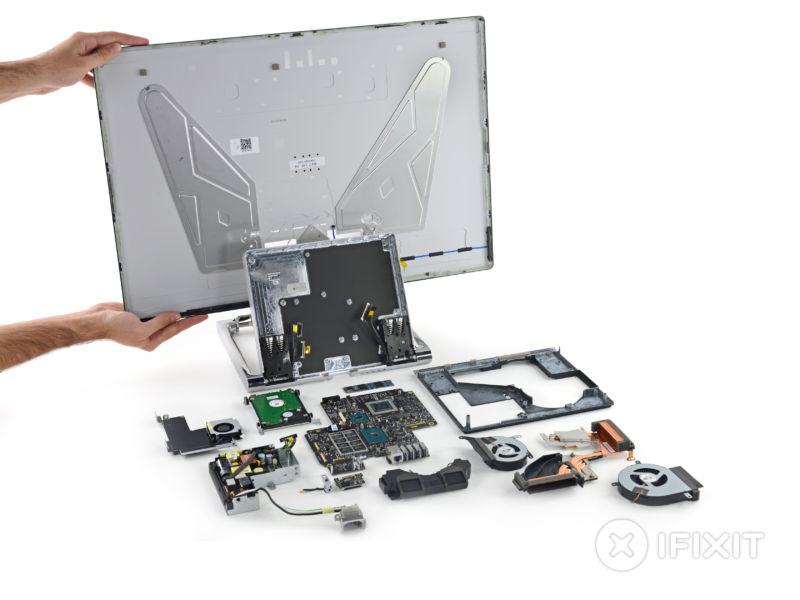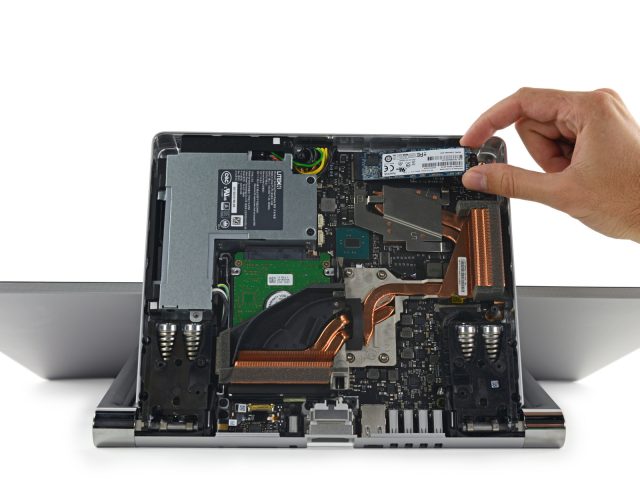
In their bid to determine how repairable and upgradeable things are, the people at iFixit have thoroughly disassembled and beautifully photographed Microsoft's new all-in-one desktop, the Surface Studio.
It's not a tremendous surprise to learn that the machine is full of soldered-down parts with a custom motherboard; this isn't a regular ATX PC, after all, and Microsoft has not designed it to be end-user serviceable. Accordingly, the processor, GPU, and RAM are all soldered down; if you buy the system with its base 8GB of RAM, that's all it's ever going to have.
The gorgeous 4500×3000 28-inch display is all but a completely sealed unit, too, though it's packed with touch screen sensors, cameras, speakers, and even its own dedicated ARM processor. The only saving grace is that, should you damage the screen, it appears that the entire unit can be replaced easily. This is unlikely to come cheap, mind you, as the screen is far and away the most expensive component of the entire system.

However, one part of the system does appear just about amenable to repair and replacement. The Surface Studio uses hybrid storage, combining an SSD with a larger spinning disk. Rather than using an integrated hybrid drive, these are discrete components, and both use standard connectors: an M.2 SSD (64GB in 1TB systems, and we believe larger in the 2TB machines) and a regular 2.5-inch SATA spinning disk. While it's a bit of a chore to get into the system's base unit, both of these should be replaceable should you choose. Disappointingly, the SSD is only SATA (rather than the faster NVMe), and the spinning disk is only SATA 2 (rather than SATA 3).
The easily replaced screen, combined with the standard storage parts, leaves the Surface Studio with a repairability score of five out of ten. This is a cut above most laptops and other Surface products and is comparable to the iMac. The reality is that none of these systems is particularly good when it comes to repair or upgrading, with their designers favoring custom parts and compact designs over something a little larger and more standard.
reader comments
126